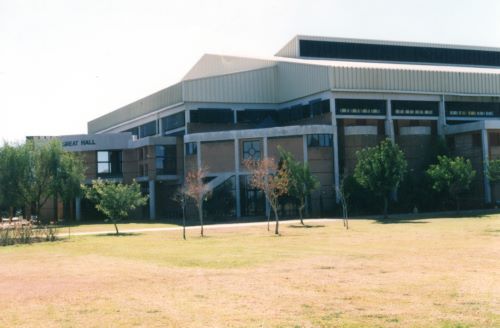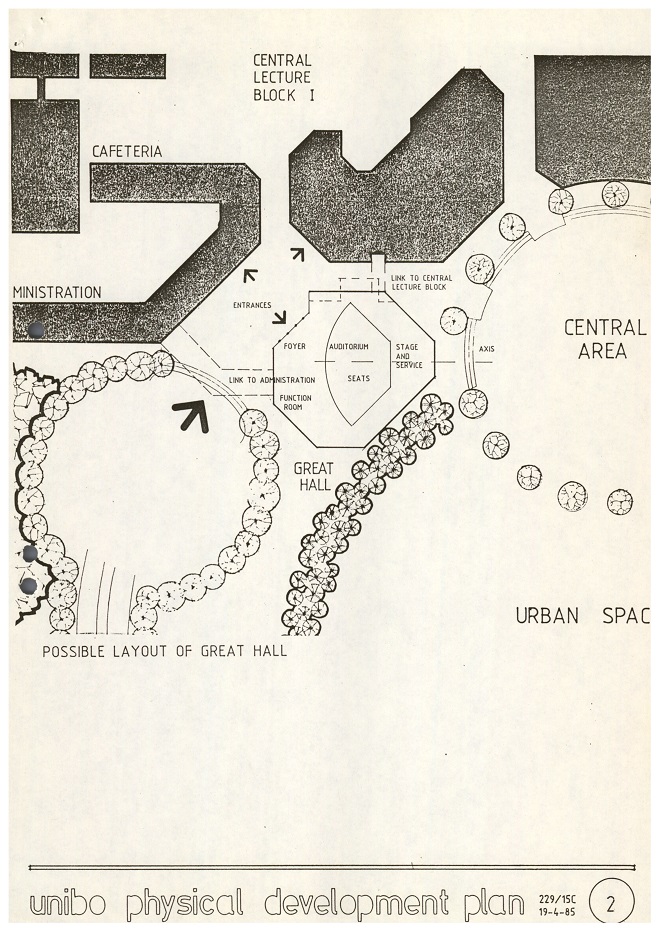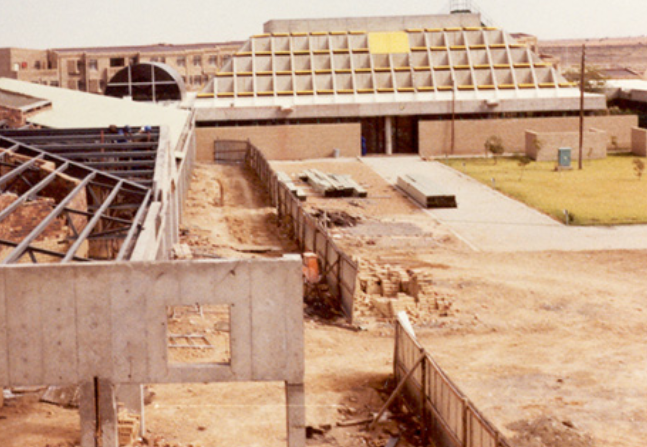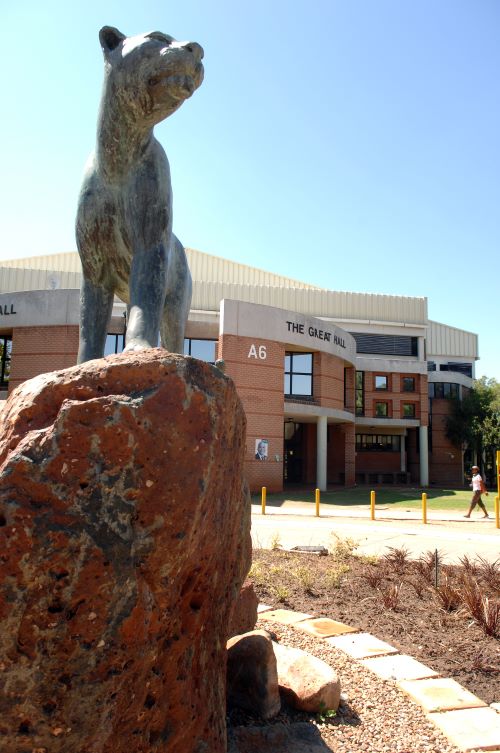
The Great Hall - now
Planned years before it was actually built, the Building Committee noted in 1985 that space for 1 500 to 2 000 was needed. Then the Great Hall came along.

1985 Possible placement of the Great Hall
University of Bophuthatswana Physical Development Plan indicating the placement of the Great Hall as foreseen on 19 April 1985.
- The committee took notice on 26 May 1989 that R8 million was available for the building of a “Multi-Purpose Centre”, later known as The Great Hall.
- This was made possible by donations received from: Sun International (Bophuthatswana) Ltd, Rustenburg Platinum Holdings Ltd, Impala Platinum Mines Ltd and The Anglo American/De Beers Chairman’s Fund Educational Trust.
- The committee noted its appreciation of Sir Albert Robinson’s efforts in securing the funds for the formation of the centre. The “Robinson Room” in the Great Hall was later named in his honour.
- Contractors started on 14 August 1989 and the construction period took 13 months.

The auditorium (back) and staff cafeteria (front left) in the process of being built. The photo appeared in Eish! in April 2016.
- It was expected to be completed in January 1991 well within the budget.
- The leopard sculpture that was initially placed in front of the Great Hall was a symbol to express the campus’s connection with its past. It was the symbol for Bophuthatswana and the head of the leopard was part of the national flag. The Leopard was sculpted by Josua Nel and unveiled on 14 February 1991 during the official opening of the Great Hall.
- The leopard is regarded as an important traditional symbol of authority and royalty in the Tswana culture and was depicted on the flag of the now defunct Republic of Bophuthatswana.

The Great Hall with the leopard statue, sculpted by Josua Nel
- The sculpture was later removed after calls to do so, since it was seen as an apartheid symbol.
- In February 1989 the Building Committee noted that a letter was received from the Squash Racquets Association of SA (SRAS). According to this the SRAS did not approve the “SKEGA” floors of the type installed for competitive play. Banbury Squash Courts (SA) (Pty) Ltd recommended that the original design for wooden floors be retained. All other squash courts locally are of wooden construction. That quotations to replace for the floors of the courts amounted R75 554.
- The Great Hall was officially opened on 14 February 1991 during a prestigious event.
- The Great Hall can seat 5 000 and is being used for writing of examinations, graduation ceremonies, concerts, student registration, official university functions such as the official opening of the University. It is also used for the opening of Provincial Legislature.
- It has facilities for various sports such as badminton, table tennis and body building. It also houses the campus gym.
- The heating of the Great Hall became a matter of importance during 2002. This was due to the fact that since other venues for exams were in short supply the Great Hall necessarily had to be used for this purpose. Due to the extreme cold, the installation of heating became urgent.
- A report that was compiled by Stewart Scott after investigating heating solutions for the Great Hall was presented. It concluded that the Great Hall was not designed to accommodate a ducted air-conditioned system and it is anticipated that the steel roofing structure will limit the application of ducting into the central area. The installation of ducting along the spectator areas which surround the central arena on an elevated level, would be less problematic. It is then recommended that the spectator area be heated using the ducted alternative catering for an indoor temperature of 21 °C. It is also recommended that an under floor heating alternative be considered for the central area.
